The National Hurricane Center (NHC) has been closely monitoring a developing weather system that could become Tropical Storm Alvin2025. According to the NHC, there is a high chance of this system forming off the coast of Mexico.

Residents in the affected areas are advised to stay updated with the latest forecasts and warnings. The formation of Alvin Tropical Storm could mark the beginning of the 2025 hurricane season.
The potential impact of this storm on Mexico is being closely watched, with forecast models indicating possible heavy rainfall and strong winds.
Key Takeaways
- The NHC is monitoring a system that could develop into Tropical Storm Alvin2025.
- A high chance of formation is predicted off Mexico’s coast.
- Residents are advised to stay informed about the latest forecasts.
- The storm could bring heavy rainfall and strong winds to Mexico.
- The 2025 hurricane season’s first named storm could be Alvin.
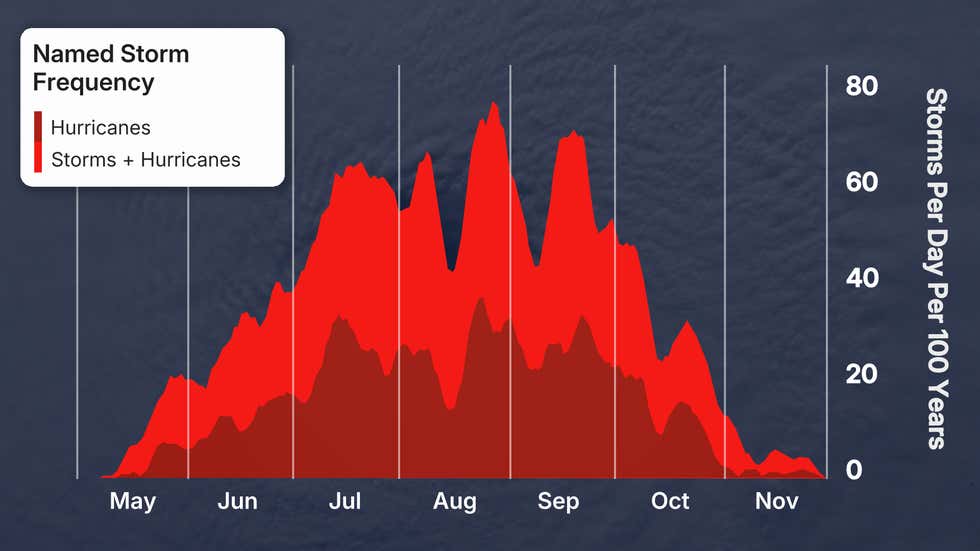
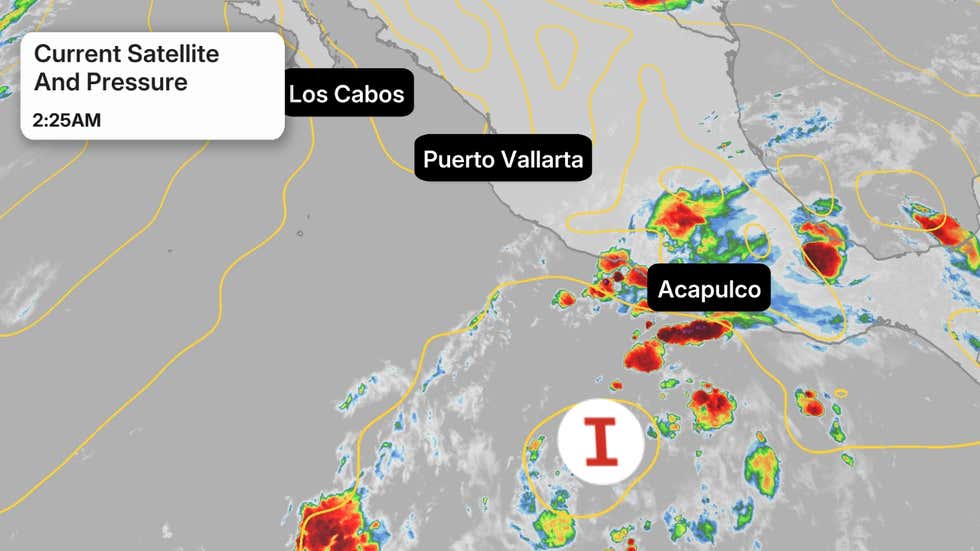
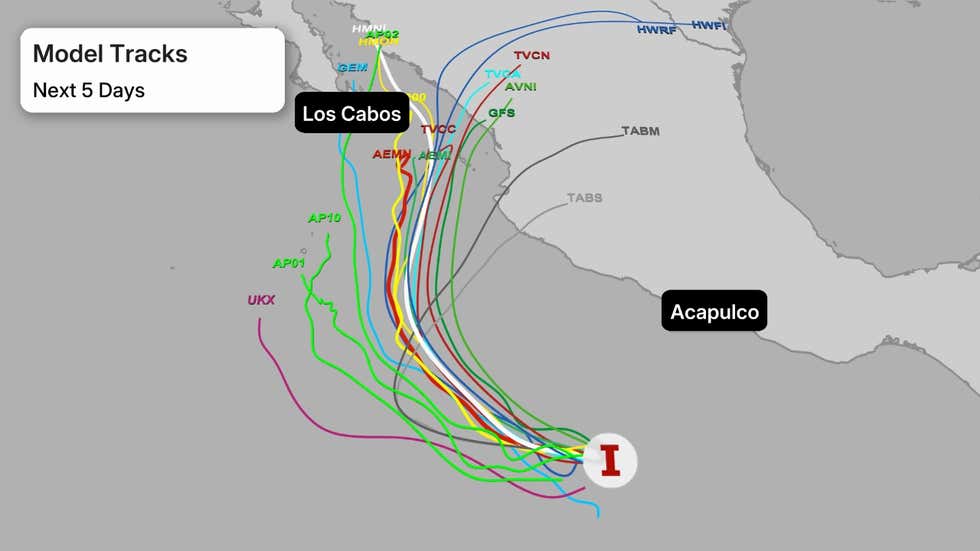
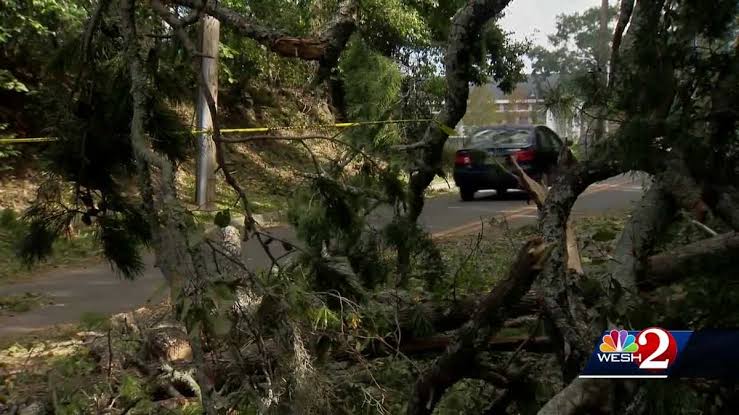
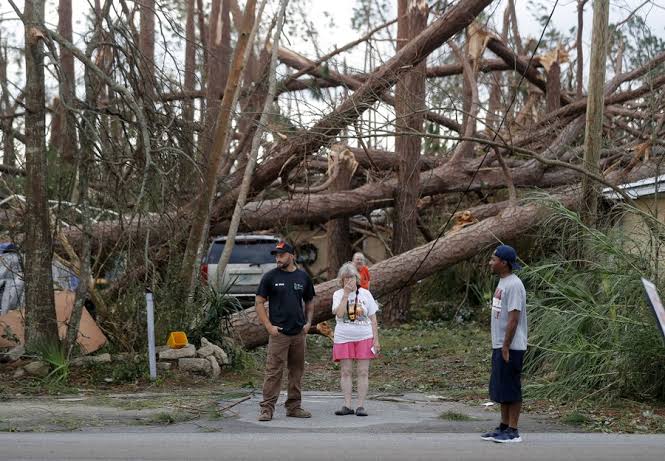
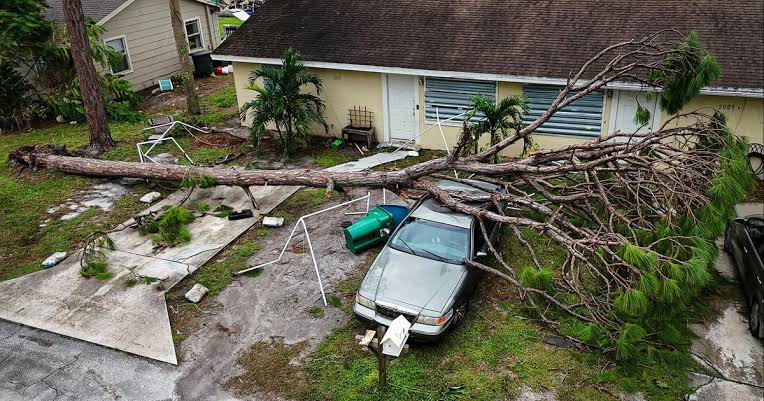

Current Status of Tropical Storm Alvin2025
The National Hurricane Center (NHC) has been closely monitoring Tropical Storm Alvin2025 as it develops in the Eastern Pacific. This early season storm has garnered significant attention due to its potential impact on Mexico’s Pacific Coast.
Formation and Development
Tropical Storm Alvin2025 originated from a tropical wave that moved off the coast of Central America. The NHC has designated the area as Invest90-E and predicts a high chance of development into a tropical depression. Early season storms like Alvin2025 are relatively rare and can be challenging to predict due to varying atmospheric conditions.
The formation of Tropical Storm Alvin2025 is attributed to a combination of factors, including warm ocean waters and low wind shear. These conditions are favorable for the development of tropical cyclones.
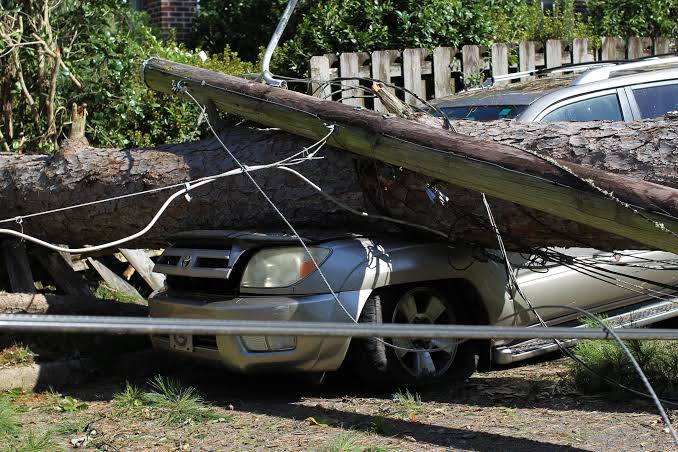
Current Location and Intensity
As of the latest update, Tropical Storm Alvin2025 is located approximately 500 miles south of the Mexican coast. The storm is currently moving northwest at a speed of 10 mph, with maximum sustained winds of 40 mph. The NHC continues to monitor the storm’s progress, providing updates on its trajectory and intensity.
The current intensity of the storm is categorized as a tropical storm, with wind speeds that are expected to increase as it moves over warmer waters. The storm’s central pressure is 1002 mb, indicating moderate intensity.
Recent Observations
Recent observations from hurricane reconnaissance aircraft have provided valuable data on the storm’s internal structure. Satellite imagery has revealed a well-defined circulation center, with convective bands wrapping around the center.
- Satellite imagery indicates a well-defined circulation center.
- Convective bands are wrapping around the center of the storm.
- Wind shear remains low, favoring further development.
Wind shear, a critical factor in the development of tropical storms, remains low in the vicinity of Alvin2025. Low wind shear allows the storm to maintain its structure and potentially intensify.
Tracking Tropical Storm Alvin2025: Path and Movement
Tropical Storm Alvin2025 is currently on a west-northwestward trajectory, posing a potential threat to Mexico’s coast. The storm’s movement is being closely monitored by meteorologists using advanced tropical cyclone tracking tools and pacific hurricane tracking 2025 models.
Current Trajectory Off Mexico’s Coast
The storm is expected to continue on its current path, moving at a speed of around 10 mph. This trajectory could potentially bring heavy rainfall and strong winds to coastal regions. Residents are advised to stay informed about the path of Tropical Storm Alvin through reliable sources.

Speed and Direction Changes
While the current trajectory suggests a west-northwestward direction, any changes in speed or direction could significantly impact the storm’s landfall. Meteorologists are closely watching for any shifts that might affect the regions at risk.
Understanding where is Tropical Storm Alvin headed is crucial for preparation and safety measures. The use of storm tracking maps and radar imagery provides valuable insights into the storm’s potential path.
Storm Tracking Maps and Radar Imagery
Advanced storm tracking maps are available to help visualize the storm’s trajectory. These maps, combined with radar imagery, offer a comprehensive view of the storm’s movement and potential impact zones.
By utilizing these tools, individuals can stay informed about the latest developments regarding Tropical Storm Alvin2025. Stay tuned for updates on this evolving situation.
Weather Forecast for the Coming Days
With Tropical Storm Alvin 2025 nearing Mexico’s Pacific Coast, understanding the weather forecast is vital for residents and travelers alike. The National Hurricane Center (NHC) provides critical updates that help in preparing for the storm’s impact.
Short-term Forecast (48 Hours)
The NHC predicts a high chance of development into a tropical depression within the next 48 hours. Currently, Tropical Storm Alvin 2025 is moving northwest at a speed of 10 mph, with maximum sustained winds of 40 mph. Heavy rainfall and flash flooding are potential risks in the regions it is expected to affect.
Extended Forecast (3-5 Days)
Looking ahead to the next 3-5 days, the extended forecast indicates that Tropical Storm Alvin 2025 could potentially strengthen into a hurricane. The NHC is closely monitoring the storm’s progress, and conditions are favorable for intensification. Residents in the affected areas should remain vigilant and follow official updates.
Factors Influencing Storm Development
Several factors influencing storm development are being closely watched by meteorologists. These include sea surface temperatures, wind shear, and the storm’s internal dynamics. Warm sea surface temperatures are particularly conducive to strengthening, and the current conditions suggest that Tropical Storm Alvin 2025 could become a hurricane if these factors align favorably.
The NHC’s NOAA hurricane forecast models indicate a potential for significant intensification. However, the exact trajectory and intensity will depend on various atmospheric and oceanic conditions. Staying informed through official channels is crucial for those in the storm’s projected path.
Timeline of Tropical Storm Alvin’s Development
As Tropical Storm Alvin emerges, understanding its timeline is crucial for those in its potential path. The storm’s development is being closely monitored, and updates are being provided regularly.

Initial Formation and Classification
Tropical Storm Alvin is expected to form off the coast of Mexico this week. The initial formation phase involves the storm’s organization and strengthening into a tropical depression, which is then classified as a tropical storm based on wind speed criteria.
Key Milestones and Changes
Key milestones include the storm’s intensification, changes in direction, and potential impact on coastal regions. As of now, the storm is predicted to move northwest, parallel to the Mexican coast.
Projected Timeline for Coming Days
The projected timeline indicates that Tropical Storm Alvin will continue to strengthen over the next 48 hours. By day three, it is expected to be within close proximity to the Mexican coast, potentially bringing heavy rainfall and strong winds.
Residents in the affected regions are advised to stay informed through official updates and to prepare for potential impacts.
Potential Hurricane Development Assessment
The NHC predicts a high chance of Tropical Storm Alvin2025 developing into a tropical depression, potentially leading to hurricane status. As the storm continues on its trajectory, it’s essential to assess the factors that could influence its development into a hurricane.
Current Wind Speeds and Classification Criteria
Tropical Storm Alvin2025 currently has sustained winds of 45 mph, with gusts reaching up to 60 mph. According to the Saffir-Simpson Hurricane Wind Scale, a storm is classified as a hurricane when its sustained winds reach 74 mph. The NHC will continue to monitor the storm’s wind speeds closely, as even small increases could lead to a change in classification.
Conditions Favorable for Intensification
Several conditions are currently favorable for the intensification of Tropical Storm Alvin2025. These include warm sea surface temperatures, which are essential for hurricane development, and low vertical wind shear, which allows the storm to maintain its structure. Additionally, the storm is currently located in an area with high humidity, further supporting potential intensification.
NOAA Hurricane Prediction Models
The NOAA hurricane prediction models are indicating a potential for significant intensification of Tropical Storm Alvin2025 in the coming days. These models, which include the Global Forecast System (GFS) and the European Centre for Medium-Range Weather Forecasts (ECMWF) model, suggest that the storm could reach hurricane strength within the next 48 to 72 hours. However, it’s crucial to note that hurricane prediction models can be subject to change, and the NHC will continue to provide updates as necessary.
Projected Impact on Mexico’s Pacific Coast
As Tropical Storm Alvin 2025 progresses, its impact on Mexico’s Pacific coast is becoming increasingly concerning. The storm is expected to move west-northwestward at around 10 mph, potentially bringing heavy rainfall, strong winds, and significant coastal concerns to the region.

Regions at Highest Risk
The regions along Mexico’s Pacific coast are at varying levels of risk due to Tropical Storm Alvin 2025. States such as Guerrero, Michoacán, and Colima are likely to experience the most significant impacts, including heavy rainfall and potential flash flooding.
The storm’s trajectory suggests that coastal areas, particularly those with low elevation, are at a higher risk of experiencing severe weather conditions.
Expected Weather Conditions in Acapulco and Surrounding Areas
Acapulco and its surrounding areas are expected to experience heavy rainfall and strong winds as Tropical Storm Alvin 2025 approaches. Residents can anticipate potentially hazardous conditions, including flash flooding and power outages.
The storm’s impact on tourism and local infrastructure is a significant concern, with potential disruptions to daily life and economic activities.
Historical Context of Similar Storms in the Region
Mexico’s Pacific coast has historically been affected by tropical storms and hurricanes, with some causing significant damage and loss of life. Understanding the historical context of these storms can help in preparing for the potential impacts of Tropical Storm Alvin 2025.
By examining past storms and their effects on the region, residents and authorities can better anticipate and respond to the challenges posed by Tropical Storm Alvin 2025.
Potential Hazards and Threats
As Tropical Storm Alvin 2025 approaches Mexico’s Pacific Coast, several potential hazards and threats are being closely monitored by meteorologists. The storm is expected to bring heavy rainfall and strong winds, posing significant risks to the region.
Heavy Rainfall and Flash Flooding Risks
One of the primary concerns with Tropical Storm Alvin 2025 is the potential for heavy rainfall and subsequent flash flooding. The storm is forecasted to bring substantial precipitation to the affected areas, which could lead to rapid rises in water levels and potentially catastrophic flooding.
Heavy rainfall can overwhelm local drainage systems, leading to flash floods that can be particularly dangerous due to their rapid onset. Residents in low-lying areas are advised to be on high alert for flood warnings and to take necessary precautions to ensure their safety.
Wind Damage Potential to Structures
In addition to the risks associated with heavy rainfall, Tropical Storm Alvin 2025 is also expected to bring strong winds that could cause significant damage to structures. The wind damage potential is a concern for buildings, infrastructure, and power lines, potentially leading to power outages and property damage.
Structures that are not well-maintained or are inherently weak are at a higher risk of damage from the strong winds. Homeowners and businesses are advised to secure any loose outdoor items and to reinforce their properties to mitigate potential damage.
Coastal Concerns and Storm Surge
Coastal regions are also at risk due to the potential for storm surge and high surf. A storm surge is a rise in sea level due to the storm, which can cause coastal flooding and erosion. The combination of high surf and storm surge can lead to significant coastal damage and loss of property.
Residents in coastal areas are advised to be aware of the risks associated with rip currents and to follow evacuation orders promptly if issued. The storm surge can also lead to saltwater intrusion into freshwater sources, potentially contaminating them.
Comprehensive Safety Tips for Coastal Residents
With Tropical Storm Alvin on the horizon, preparation is key for those living in coastal areas. The National Hurricane Center (NHC) recommends that residents take necessary precautions to ensure their safety.
Before the Storm: Preparation Checklist
Preparing before the storm hits is crucial. Here are some steps to follow:
- Stock up on supplies: Ensure you have enough non-perishable food, water (at least 1 gallon per person per day), and medications.
- Create a family emergency plan: Identify safe zones, escape routes, and a meeting point in case you get separated.
- Secure your home: Board up windows, secure outdoor furniture and decorations, and trim trees and shrubs.
- Charge your devices: Charge your phone, laptop, and any other important devices in case the power goes out.
| Supply | Recommended Quantity |
|---|---|
| Water | At least 1 gallon per person per day |
| Non-perishable food | Enough for 3-5 days |
| First aid kit | 1 per household |
During the Storm: Safety Protocols
When the storm hits, follow these safety protocols:
- Stay indoors: Avoid traveling and stay away from windows and doors.
- Keep a battery-powered radio: Stay informed about the storm’s progress.
- Avoid flooded areas: Do not attempt to walk or drive through flooded areas.

After the Storm: Recovery Guidelines
After the storm has passed, be cautious when exiting your home:
- Check for injuries: Provide assistance if needed.
- Inspect your home: Look for damage and take photos for insurance purposes.
- Avoid fallen power lines: Report them to the utility company.
By following these comprehensive safety tips, coastal residents can minimize risks associated with Tropical Storm Alvin. Stay informed, be prepared, and stay safe.
Government Response and Official Resources
As Tropical Storm Alvin 2025 approaches Mexico’s Pacific Coast, government agencies are taking proactive measures to ensure public safety. The storm’s potential impact has prompted a coordinated response from various official bodies.
The Mexican government has activated its emergency response protocols, with the National Civil Protection System leading the efforts. This includes mobilizing resources, evacuating people from high-risk areas, and preparing emergency services.
Mexican Civil Protection Actions and Alerts
The Mexican Civil Protection agency has issued official alerts for the affected regions, warning residents of potential heavy rainfall, strong winds, and coastal flooding. These alerts are disseminated through various channels, including social media, local news, and emergency alert systems.
“We are working closely with local authorities to ensure that all necessary precautions are taken to protect the public,” said a spokesperson for the Mexican Civil Protection agency.
The agency has also set up shelters for those who need to evacuate and is providing support to families affected by the storm.
U.S. Weather Service Advisories for Travelers
For travelers planning to visit or are currently in the affected areas, the U.S. Weather Service has issued advisories warning of the potential dangers posed by Tropical Storm Alvin 2025. Travelers are advised to monitor local weather forecasts and follow the instructions of local authorities.
- Check the latest weather forecasts before traveling.
- Register with your government’s travel advisory service to receive important safety and security updates.
- Follow evacuation orders promptly.
How to Access Official Updates and Warnings
To stay informed about Tropical Storm Alvin 2025, the public can access official updates and warnings through several channels:
| Source | Description | Frequency |
|---|---|---|
| NOAA Hurricane Forecast | Detailed forecasts and updates on the storm’s track and intensity. | Every 6 hours |
| Mexican Civil Protection Website | Official alerts, evacuation instructions, and shelter locations. | As needed |
| U.S. Weather Service Website | Travel advisories and weather forecasts for affected areas. | Every 6 hours |
By staying informed through these official resources, the public can better prepare for and respond to Tropical Storm Alvin 2025.
Conclusion: Staying Informed About Tropical Storm Alvin
As Tropical Storm Alvin2025 continues to move west-northwestward, it’s crucial for those in its projected path to stay informed about its development and potential impact. The storm’s trajectory and intensity will significantly influence weather conditions along Mexico’s Pacific Coast.
Residents and travelers alike should remain vigilant and monitor updates from reliable sources, such as the National Oceanic and Atmospheric Administration (NOAA) and the Mexican Civil Protection agency. For the latest forecasts and advisories, visiting the official NOAA website or checking the 2025 Hurricane Season Overview blog can provide valuable insights.
For those preparing for the storm, the “How to Prepare for a Hurricane” guide offers comprehensive safety tips and protocols. Staying informed is key to ensuring safety and minimizing potential disruptions.
Frequently Asked Questions (FAQs) about Tropical Storm Alvin2025 and related resources can be found on our website, providing additional guidance and support.
FAQ
What is the current status of Tropical Storm Alvin2025?
According to the latest updates from the National Hurricane Center (NHC), Tropical Storm Alvin2025 is currently located off the coast of Mexico, with sustained winds and a trajectory that is being closely monitored.
Will Tropical Storm Alvin2025 become a hurricane?
The potential for Tropical Storm Alvin2025 to develop into a hurricane is being assessed by the NHC, taking into account factors such as wind shear, sea surface temperatures, and other atmospheric conditions.
What is the projected impact of Tropical Storm Alvin2025 on Mexico’s Pacific coast?
The regions at highest risk along Mexico’s Pacific coast are expected to experience heavy rainfall, strong winds, and coastal concerns, with Acapulco and surrounding areas potentially facing significant weather conditions.
What are the potential hazards associated with Tropical Storm Alvin2025?
The potential hazards associated with Tropical Storm Alvin2025 include heavy rainfall and flash flooding risks, wind damage potential to structures, and coastal concerns and storm surge.
How can I stay informed about Tropical Storm Alvin2025?
You can stay informed about Tropical Storm Alvin2025 by checking the latest updates from the NHC, Mexican civil protection actions and alerts, and U.S. Weather Service advisories for travelers.
What safety tips should I follow during Tropical Storm Alvin2025?
To ensure your safety during Tropical Storm Alvin2025, follow a preparation checklist before the storm, safety protocols during the storm, and recovery guidelines after the storm.
How can I access official updates and warnings for Tropical Storm Alvin2025?
You can access official updates and warnings for Tropical Storm Alvin2025 through the NHC website, Mexican government websites, and other reliable sources.
What is the historical context of similar storms in the region?
The eastern Pacific hurricane season has experienced similar storms in the past, and understanding the historical context can help inform preparedness and response efforts.
What are the conditions favorable for intensification of Tropical Storm Alvin2025?
Conditions such as low wind shear, warm sea surface temperatures, and a favorable atmospheric environment can contribute to the intensification of Tropical Storm Alvin2025.
Where can I find more information on the 2025 Hurricane Season?
You can find more information on the 2025 Hurricane Season in our 2025 Hurricane Season Overview blog.





















































